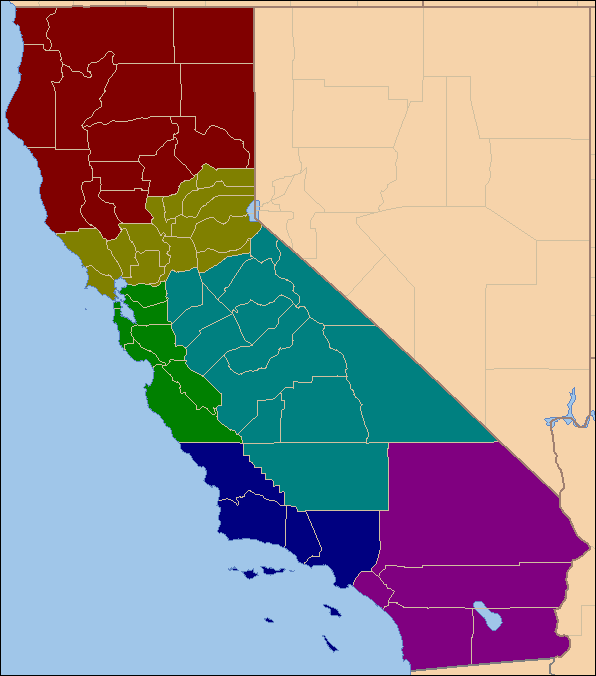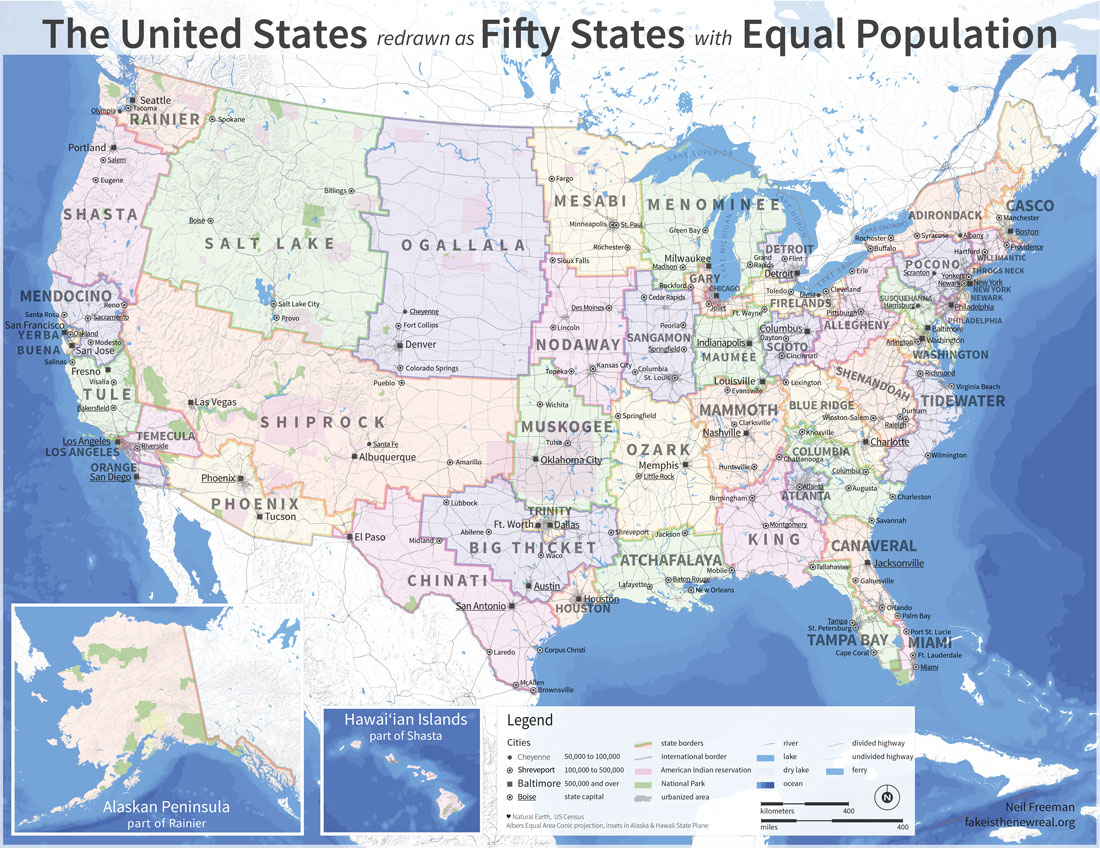20 maps that never happened
by Matthew Yglesias on December 12, 2014
-
Five Texases
Any Texan (ask my wife, or my former roommate, or Vox's own Kelsey McKinney) will tell you that Texas has the right to unilaterally split into five separate states. This is not actually true (see section three of article four of the US Constitution), but it's fun to think about. Naturally, there are any number of different ways in which this could be achieved, but my favorite plans follow the basic scheme of this map by Timmy Hunter-Kilmer. The idea is that the state's major cities — Houston, Dallas, San Antonio, and Austin — should each anchor their own state, while a fifth state is composed of the largely empty, largely rural portions of the north and west. This division of Texas would greatly increase Republican representation in the US Senate, as four of the five sub-Texas' would be politically conservative. The blue colored Texas stretching from the Mexican border to San Antonio would, however, be quite left-wing and feature a majority Latino population. -
Six Californias
In December 2013, venture capitalist Tim Draper introduced the world to his proposal to divide California into six smaller states and his intention to put the idea on the ballot as an initiative. The official story was that smaller states would be more democratic and better-governed. To opponents it looked like a rather transparent effort to boost Republican Party fortunes in national politics by breaking down the largest blue state, while perhaps creating the opportunity for the new (and still blue) state of Silicon Valley to enact drastic tax cuts now that its affluent residents no longer had to support lower-income portions of the state. Whatever Draper's real motives, the plan failed to qualify for the ballot. -
The equal states of America
What if American state borders were redrawn such that each of the 50 had an approximately equal population? Well, it might look a little something like this map drawn by Neil Freeman and described as an electoral college reform proposal. In partisan terms, by packing so many liberals into incredibly lopsided urban states this concept would tilt the college in favor of the GOP. Nate Cohen, for example, has calculated that Mitt Romney would have won a narrow electoral college victory under this map in 2012, despite losing the popular vote by four percentage points. But there would be broader policy implications of creating several city-states that wouldn't be subordinated to state legislatures and would send their own urban-focused senators to Washington. This remapped America would have more non-white statewide elected officials, and give politics less of a pronounced regional schism. -
A Russian professor's vision of US breakup
Russian professor Igor Panarin's 1998 prediction that the United States would break up by 2010 has been taken seriously in recent years in the Russian media (albeit with a revised timeline), especially a few years back when the US was reeling from the financial crisis and the Russian economy was riding high on a commodity price boom. "The US dollar isn't secured by anything," Panarin told Izvestia. "The country's foreign debt has grown like an avalanche; this is a pyramid which has to collapse." His idea was that after a period of chaos and civil war, the country would split into four pieces, each of which would be aligned with a different foreign power. The suggestion that Kentucky, Tennessee, and South Carolina would naturally align with the northeastern states indicates a questionable level of familiarity with American society. But the sketch is an important window into the mentality of Russian hyper-nationalists and what they see as a realistic possible endgame for Russo-American geopolitical competition.




No comments:
Post a Comment